A formal reply to a meeting invite shows respect and professionalism. It’s not just about saying yes, it’s about saying it in the right way. If you’ve ever felt unsure or paused before typing your message, you’re not alone. Many people often wonder how to accept a meeting invitation formally.
Accept a meeting invitation formally by thanking the sender, confirming the date and time, and stating your role. Ask about any technical needs, share a short bio if needed, and end with polite words showing you’re ready and appreciative.
Are you curious about what else to include or how to make your message sound just right? Keep reading—this article shares all the key steps, examples, and helpful tips you need to write a clear and respectful reply every time.
How to Accept a Meeting Invitation Formally?
Getting invited to speak at a conference is a big moment for anyone. It means someone noticed your ideas and wants to hear from you. But replying the right way is just as important as speaking. Read the tips below to help you respond clearly and politely.

Say Thank You
Starting your reply with a thank you shows you’re polite and respectful. It also helps build a friendly tone from the very beginning. A short line like “Thank you for the invitation to speak” is perfect. Even if it’s a big event like one of the upcoming conferences in Canada or any other country, it’s still important to sound warm. This first step makes everything else in your message feel more positive and welcoming.
Confirm the Role
It’s always helpful when you clearly mention what you’ll be doing. If you’re going to speak, then write something like, “I confirm my role as a guest speaker.” This avoids confusion and keeps everyone on the same page. Try to make your message simple and clear without adding extra words. Being honest about what you can do also helps the organizers plan better for the event.
Repeat the Event Details
Double-checking the date, time, and location makes your reply stronger. You can say something like, “Looking forward to joining the event on June 22 at 3 PM.” This way, you make sure there’s no mistake about the event details. If anything needs to be changed, it can be done early. This step helps both you and the organizer feel more prepared and confident.
Ask About the Audience
Knowing who will be listening helps you prepare the right message. A quick question like, “Can you share a bit about the audience type?” is enough. You don’t need a full list, just a short idea of the group. This helps you speak in a way they’ll understand better. The more you know about the audience, the easier it is to connect with them.
Request Technical Info
If you’re using slides or speaking online, ask about the tools. You might say, “Will there be a mic or a projector available?” Knowing the setup helps you plan your talk without stress. It also makes things smoother on the day of the event. When both sides are ready, everything feels more comfortable and works better for everyone involved.
Offer a Short Bio
Adding a short bio can be really useful for the event team. It helps them prepare programs, posters, or speaker lists the right way. You can say, “I’m adding a short bio here in case it’s needed.” Keep it short and simple with just a few facts about yourself. This small step shows you’re organized and ready to help in any way needed.
End Politely
Leaving your reply with a kind ending leaves a nice impression. You can write something like, “Thanks again, I’m looking forward to the event.” A short line like that keeps your tone polite and warm. You don’t need anything too long or fancy. Ending this way makes your full message sound thoughtful and professional.
Saying yes to a speaking invitation is a proud and exciting thing. A short, kind message helps you show that you’re happy to join. Organizers will feel more confident when you reply clearly and nicely. Taking a few minutes to respond well makes a big difference.
What Phrases to Use When Accepting a Meeting Invitation?
You really need to respond when someone invites you to a meeting. It’s not just about saying yes, but about saying it well. Good responses show respect and help things move smoothly. Here are some helpful phrases and tips to make your reply better.
Say Thank You
Starting with a simple thank you helps set a good mood right away. It shows that you respect the person and appreciate the invitation. You can write something like, “Thank you for inviting me,” or “I’m happy to join.” It feels more friendly and polite. In formal cases, like when you accept an invitation to speak at a conference, saying “I appreciate the chance” adds a professional touch.
Confirm Clearly
Most people just want to know if you are coming or not. That’s why it’s best to say it clearly and without confusion. You can use lines like “I will be there” or “I confirm my attendance.” These short phrases are easy to understand and leave no room for doubt. It helps the other person plan things better when they get a clear answer from you.
Repeat the Details
Even if the sender gave all the details, it’s smart to repeat them. This helps both sides stay on the same page and avoid any mix-up. A quick line like “Looking forward to the meeting on Monday at 3 p.m.” works well. It shows that you read the message carefully and are aware of the plan. Simple reminders like this are useful in both small and big meetings.
Be Friendly
You can sound polite and still keep a light, friendly tone. Saying things like “It’ll be nice to see you” or “Excited to chat soon” makes your reply more personal. These words help you sound less stiff and more human. Being too serious can feel cold, so adding a kind sentence makes a better impression. It helps build a good connection between you and the other person.
Suggest Another Time
If the suggested meeting time doesn’t work, don’t panic or ignore it. Politely offer another time that works for you instead. Say something like, “I’m not free then, but I can join at 2 p.m.” This keeps the conversation going without making it awkward. Always sound calm and respectful, even when making a change. Good replies help fix timing problems without hurting anyone’s feelings.
Good words help people feel respected and happy to talk with you. A kind and clear reply makes any meeting easier for everyone involved. You don’t need big words, just honest and polite sentences. Take your time and always check your reply before sending it.
What to Include in Your Response to a Client’s Meeting Request?
Replying to a meeting request can be confusing, especially when you’re unsure what to say. You may worry about missing key details or sounding too stiff. A clear and polite response helps set the right tone and avoid any mix-ups. Keep reading to learn what to include in your reply and make a great impression from the start.
- Start With a Thank You: Always include a short thank you to show you’re polite and appreciate the invitation to meet.
- Confirm the Meeting Details: Repeat the date, time, and platform to make sure both sides understand when and where the meeting will happen.
- State Your Availability Clearly: Let the client know if you’re available at the requested time or suggest another slot if you’re not.
- Mention the Meeting Topic: Say what the meeting is about in your reply so everyone stays on the same page and avoids confusion.
- Ask if Anything is Needed: Politely ask if there’s anything you should prepare, bring, or review before the meeting begins.
- Keep the Tone Friendly: Write your message in a nice and simple way that feels warm, not too cold or too serious.
- Add a Closing Line: End your message with a short line like “Looking forward to speaking with you” to keep it kind and open.
It doesn’t take much to write a smart and thoughtful reply. A short message with the right words can make your meeting go smoother. It also shows that you care about good communication. Try these tips and see how much easier it becomes.
What to Write If You’re Accepting a Meeting but Need Time Adjustments?
Sometimes, a meeting invitation comes at a time that just doesn’t work. You still want to accept it, but you’ll need to ask for a small change. It’s all about being respectful while being honest. Let’s look at how to do that smoothly.
Start with Acceptance
It’s always best to begin by confirming that you’re happy to join the meeting. That helps show you’re interested and willing to attend, even if the time needs to change. A simple line like “Thank you, I’m glad to accept the invite” works well. You don’t need to say too much yet—just make it clear that you’re in. This makes your reply sound friendly before you talk about the timing.
Mention the Conflict
After you’ve said yes, bring up the issue with the meeting time. You can say something like, “I noticed the meeting is set for 3 PM, which overlaps with another commitment.” Make sure your message still sounds respectful and polite. It’s okay to have other plans, but it helps to explain them in a calm and honest way. This keeps the conversation smooth and avoids sounding too demanding.
Suggest a New Time
Once the timing issue is mentioned, offer a better time that works for you. Try saying, “Would it be possible to move it to 4 PM instead?” Always keep your suggestion clear and simple. Don’t list too many options; one or two is enough. If you’re responding to a time-sensitive event, such as when you reply to academic conference invitations, it’s important to acknowledge the original time while politely requesting an alternative slot.
Keep a Positive Tone
Even if you’re asking for a change, stay friendly in your words. You can say things like, “I hope this adjustment is okay with everyone.” This shows that you care about others’ time as well. Being polite makes your message easier to accept. A kind tone helps the reader feel respected, and they’re more likely to say yes to your request without any issue.
Thank Them Again
Finish your message with a short thank you to leave a good impression. A sentence like, “Thanks for understanding—I really look forward to the meeting,” is enough. This small step can make a big difference. It shows you respect their time and effort to adjust things. Ending your message this way helps close the conversation nicely and keeps things friendly between everyone.
Asking for a different time doesn’t mean saying no to the meeting. When you explain clearly and stay kind, it’s easier for others to understand. Always stay polite, offer simple options, and end with thanks. A good message brings a good reply.
Examples of Clear Confirmations for Accepting Meeting Invites
Your response should leave no doubt when someone invites you to a meeting. Clear confirmation helps the organizer know you’re attending and ready. You don’t need to write a long message—just a few simple words can do the job.
Subject: Confirmation of Meeting Invitation
Hi [Name],
Thank you for the meeting invite. I’m happy to confirm that I’ll be attending the meeting on [Date] at [Time]. Please let me know if there’s anything I should prepare or bring to the discussion.
Looking forward to it!
Best regards,
[Your Name]
Frequently Asked Questions
Sometimes you still have a few questions after reading the main steps. That’s okay! These extra answers can clear up small doubts and make things easier. Take a look below to feel even more confident when writing your reply.
Can You Accept a Meeting Without Using Email?
Yes, you can accept a meeting invite in other ways if email isn’t needed. For example, some invites come through apps like Google Calendar or Microsoft Teams. You can just click “Accept,” and it sends your reply. But if the meeting feels formal or important, a short message is always better.
Is It Okay to Accept a Meeting Using Short Sentences?
Yes, short sentences are perfectly fine as long as they are clear and polite. You don’t need big words or long messages to sound respectful. Saying things simply often works best. Just make sure your message has all the needed details.
What Should You Do If the Meeting Time Was Not Mentioned?
If the meeting time is missing, it’s smart to ask about it politely in your reply. You can say, “Thanks for the invite. May I know what time it is planned for?” This shows you’re interested and careful. Never assume the time without asking first.
Can You Accept a Meeting on Behalf of Someone Else?
Yes, but you should mention clearly that you’re accepting the invite for someone else. For example, you could say, “I’m replying on behalf of Mr. Rahman, and he is happy to accept.” This helps avoid any confusion. Always check with that person before replying to them.
Should You Always Include Your Contact Details in the Reply?
It depends on the situation, but adding your phone number or email can be helpful. If the person might need to reach you quickly, contact details save time. It also makes your message more complete. Just one line at the end is enough.
What If You’re Not Sure About Some Meeting Details?
It’s okay to ask questions in your reply if things aren’t clear. You can say something like, “Can you confirm the meeting location?” or “Will it be online or in person?” Asking questions shows you want to be well prepared. It’s always better to ask than to guess.
Is It Bad to Accept a Meeting Late?
It’s best to reply as soon as you can, but a late reply is still better than none. You can say, “Sorry for the delay. I confirm my attendance for the meeting.” A short apology makes your reply feel kind. Try not to wait too long next time.
Can You Still Accept If the Meeting Was Sent to a Group?
Yes, you can reply even if the invite was sent to many people. A short personal reply shows that you care. Just mention your own name and confirm your attendance. It helps the organizer know exactly who will be joining.
What If You Want to Join But Only for Part of the Meeting?
If you can’t stay for the whole meeting, you should mention it honestly. For example, “I’ll join but may need to leave after 30 minutes.” This helps the organizer plan better. Being honest is better than leaving the meeting without notice.
Can You Accept a Meeting Invite Without Using Formal Words?
Yes, you can still sound polite without using formal or hard words. A kind tone and simple language work very well. Just be respectful, clear, and friendly. Most people prefer messages that feel real and easy to understand.
Conclusion
Knowing what to say in your reply can help things run smoothly and leave a good impression. From saying thank you to confirming details and adding a kind tone, your message shows respect and readiness. All of this makes your reply feel thoughtful and easy to understand. So if you’ve ever asked yourself how to accept a meeting invitation formally, now you’ve got a clear and simple way to do it right.
Before you hit send, take a second look at your message. Keep it short, friendly, and polite. Always double-check the meeting time and ask if anything is needed. A little care in your reply can lead to better communication and trust. Good luck with your next meeting—hope it goes great!







